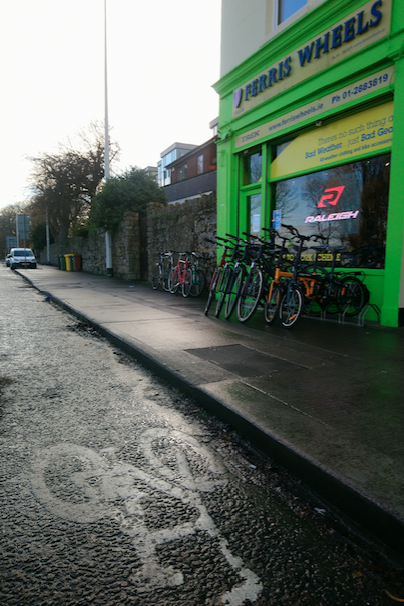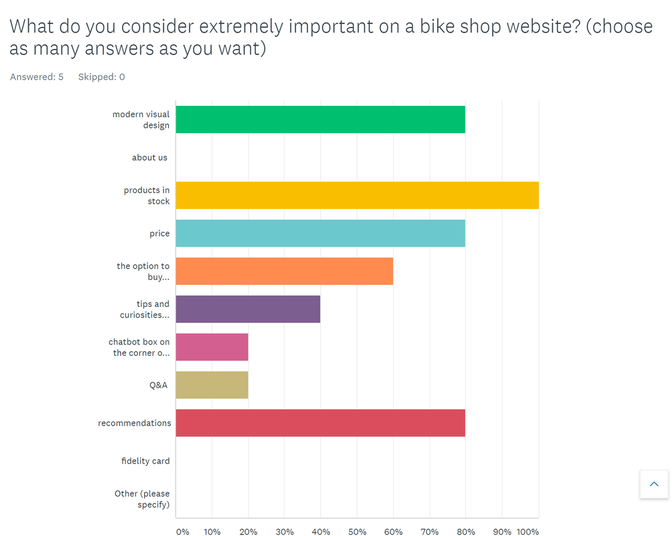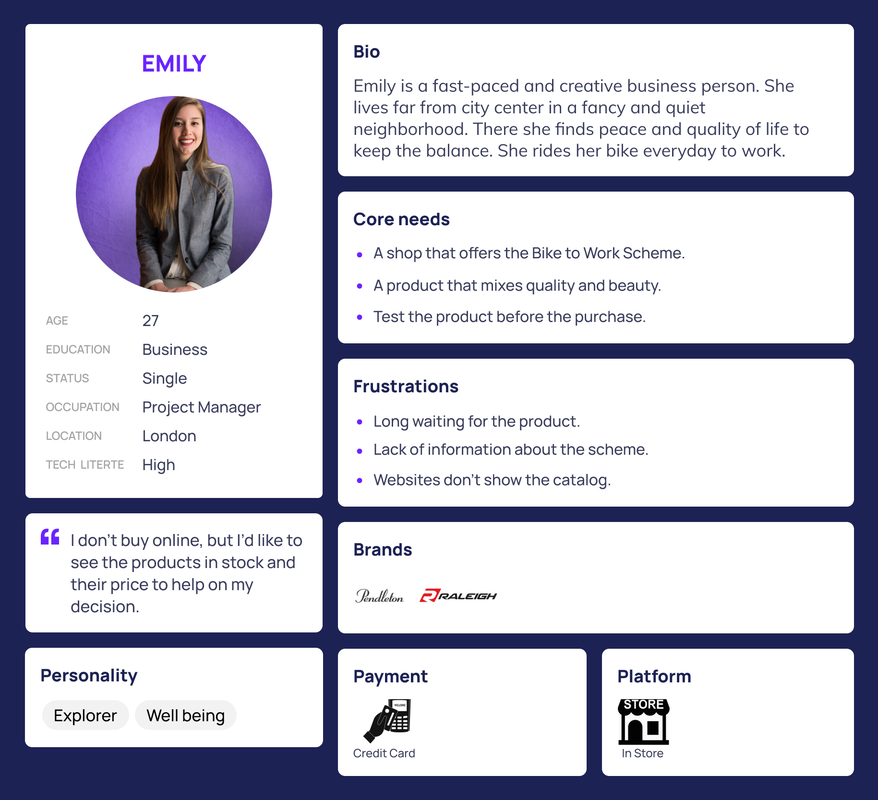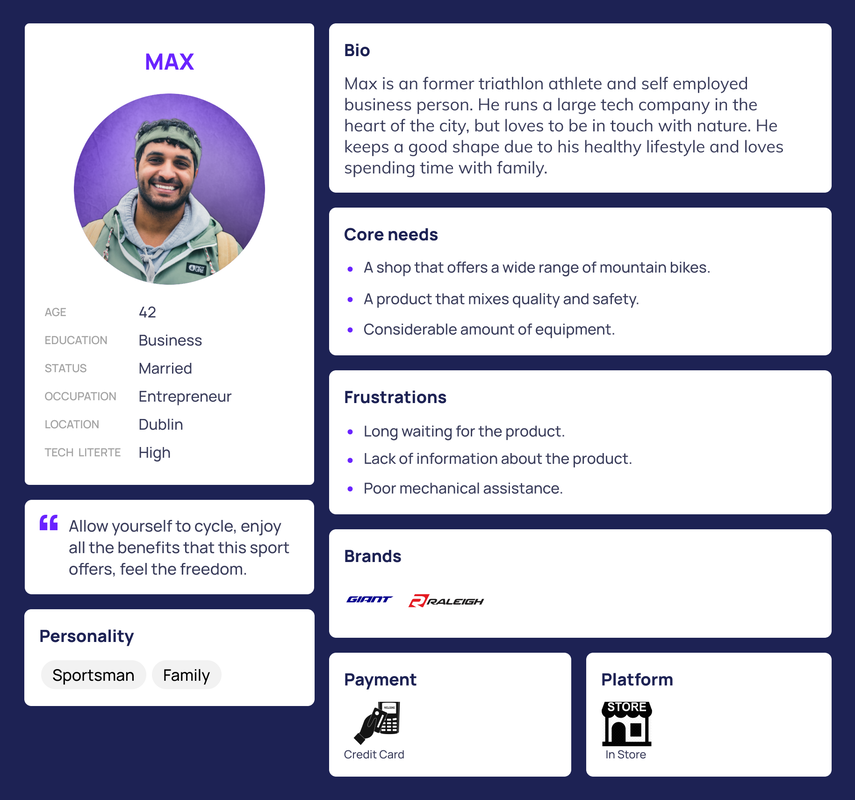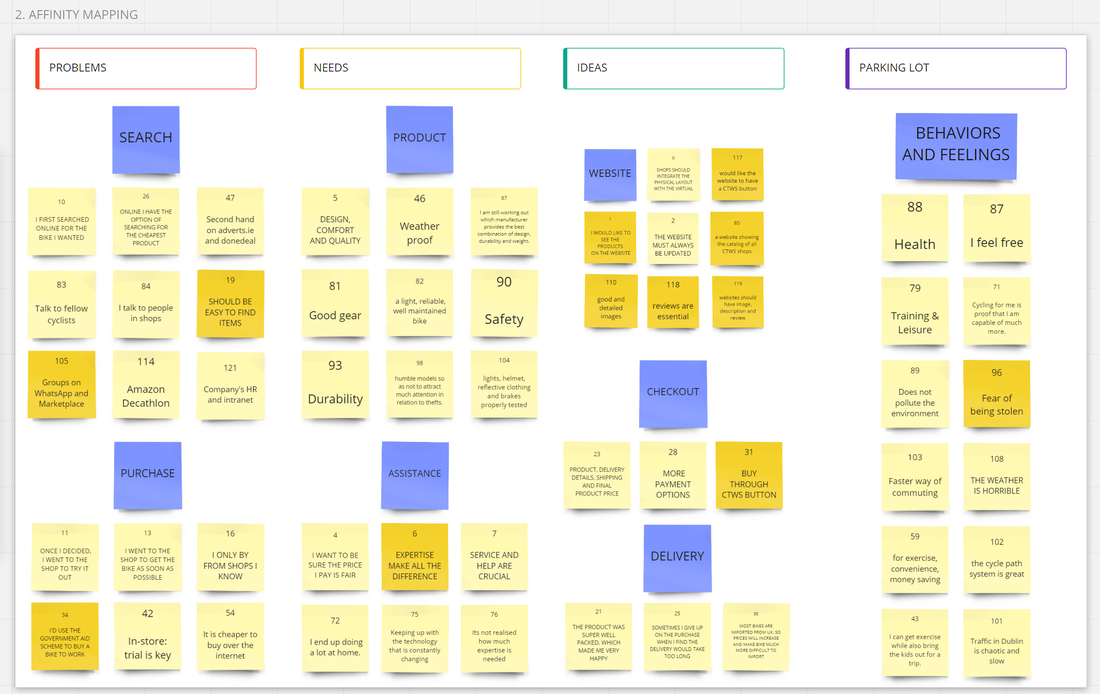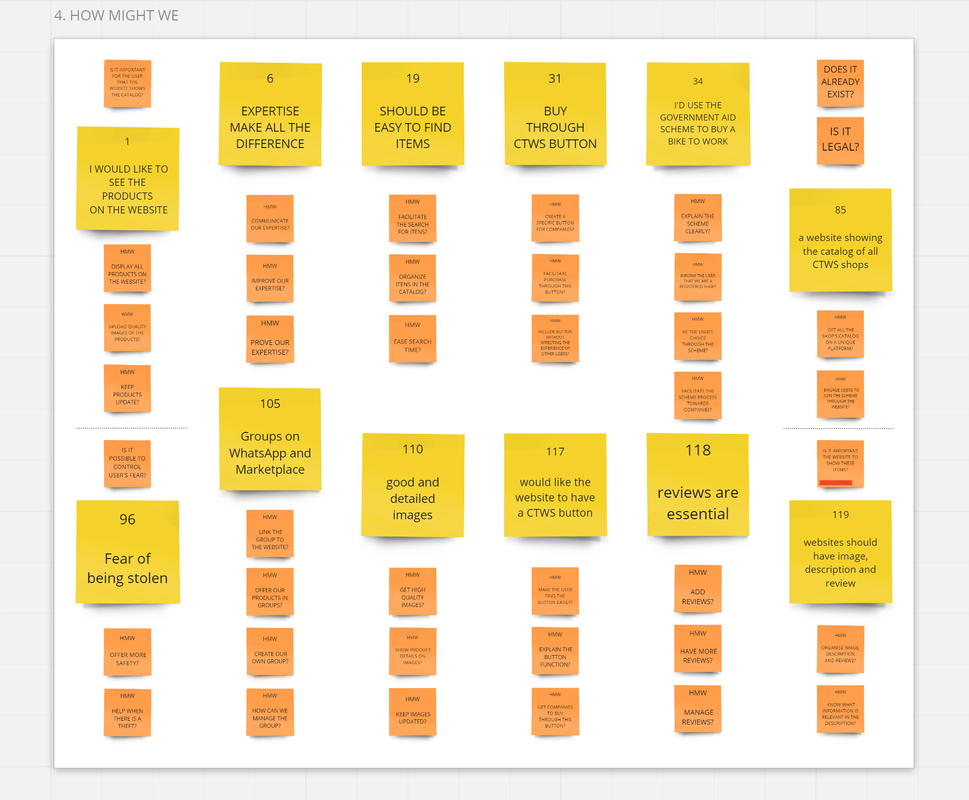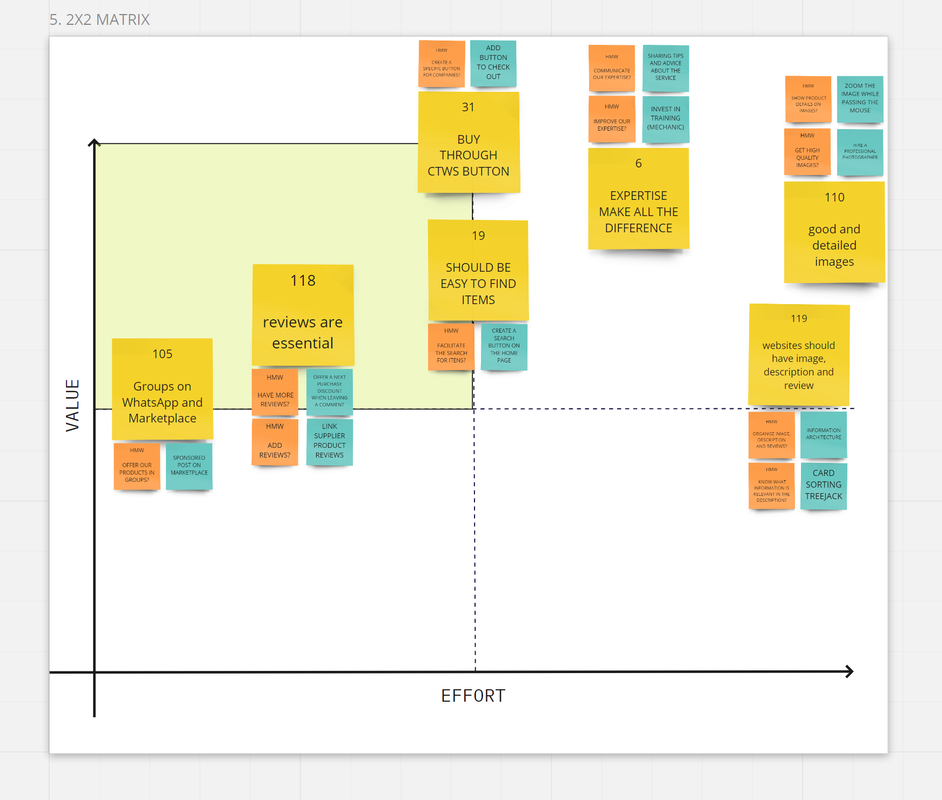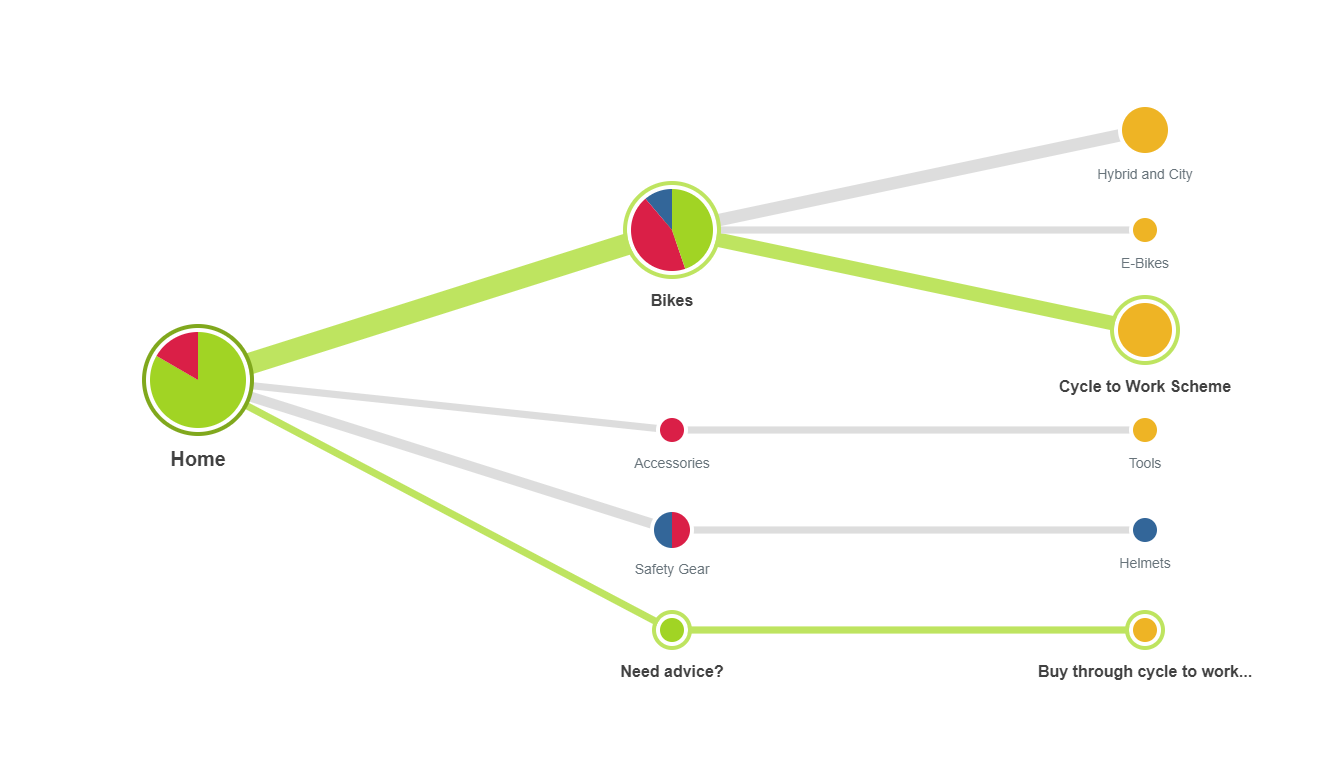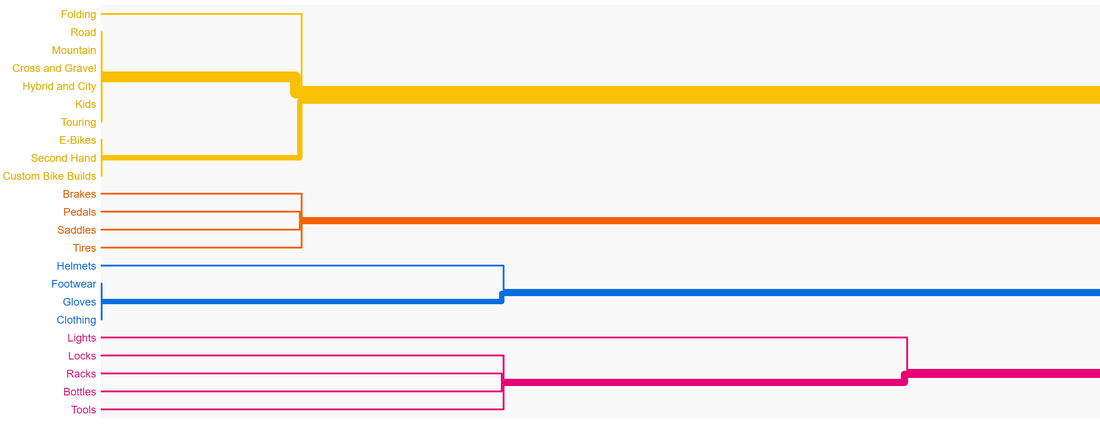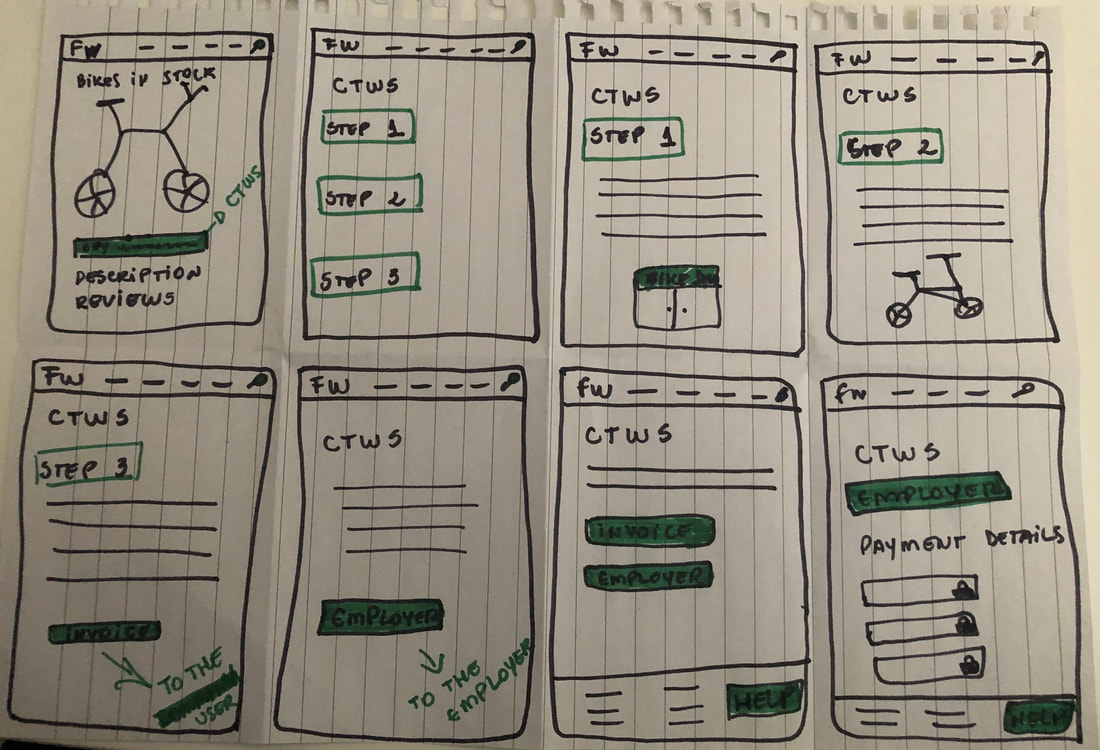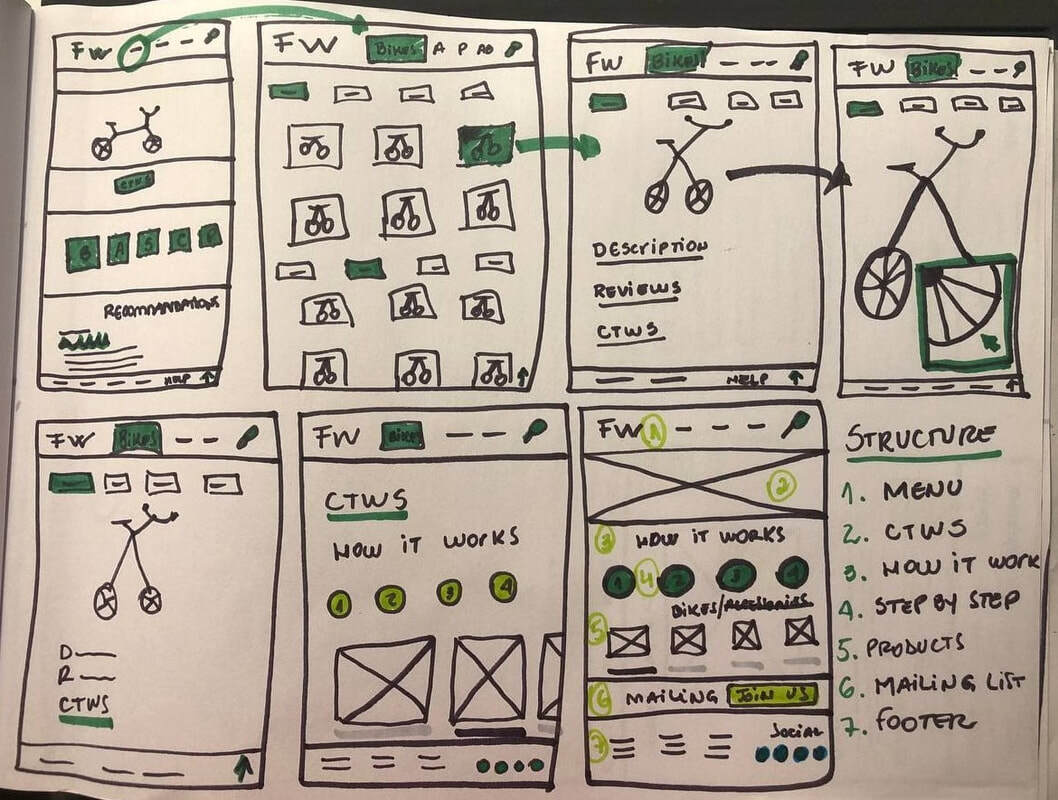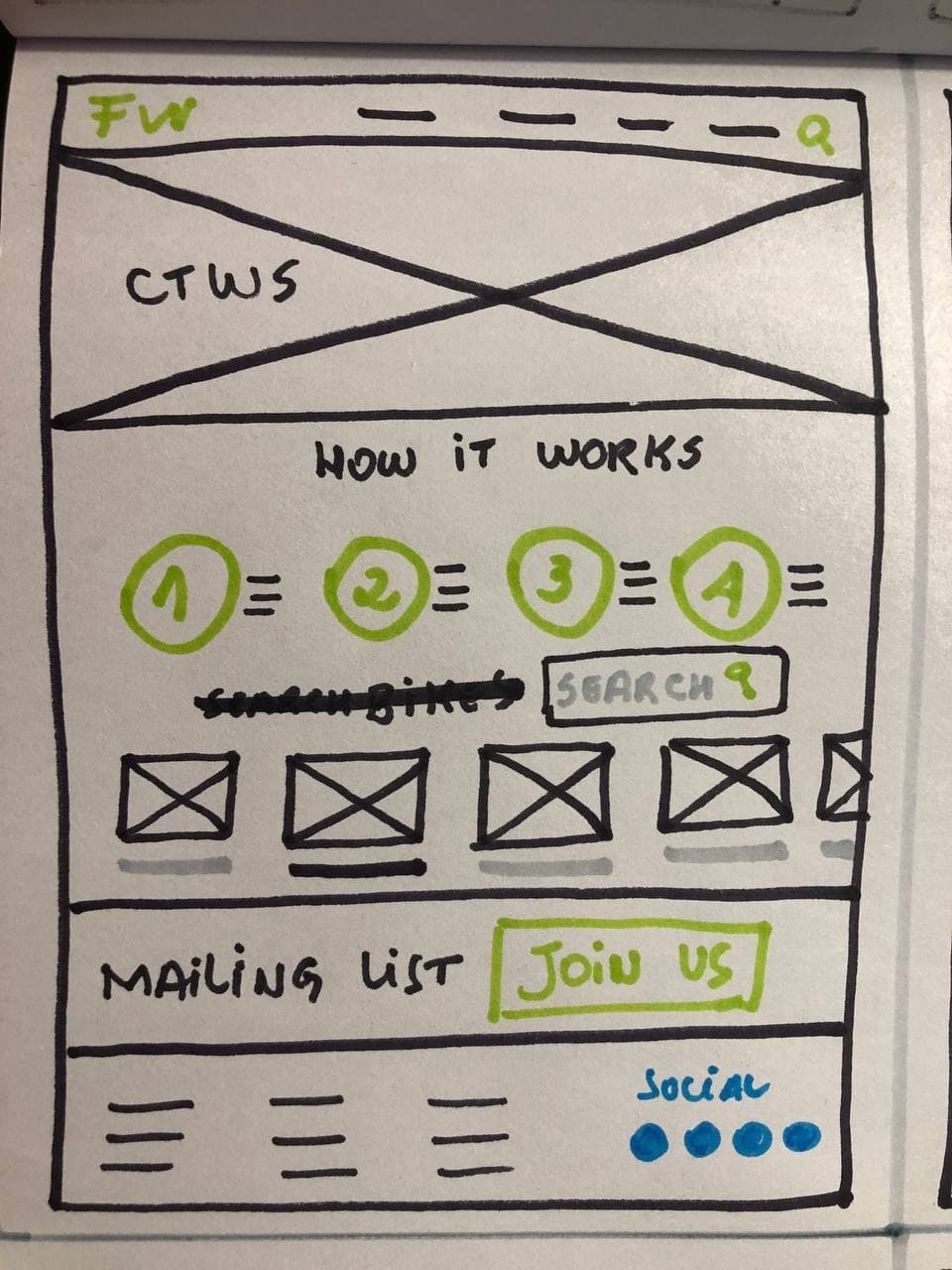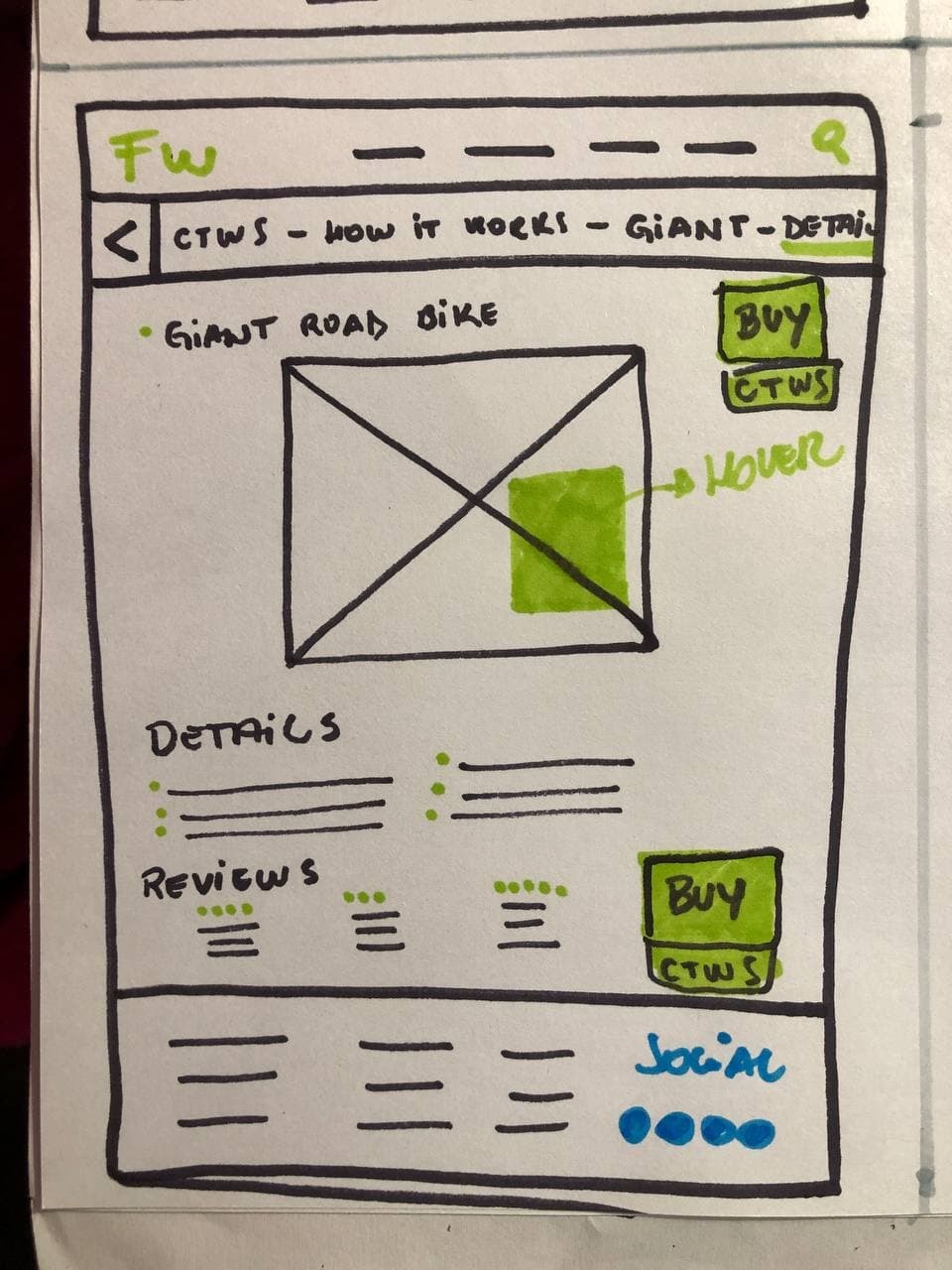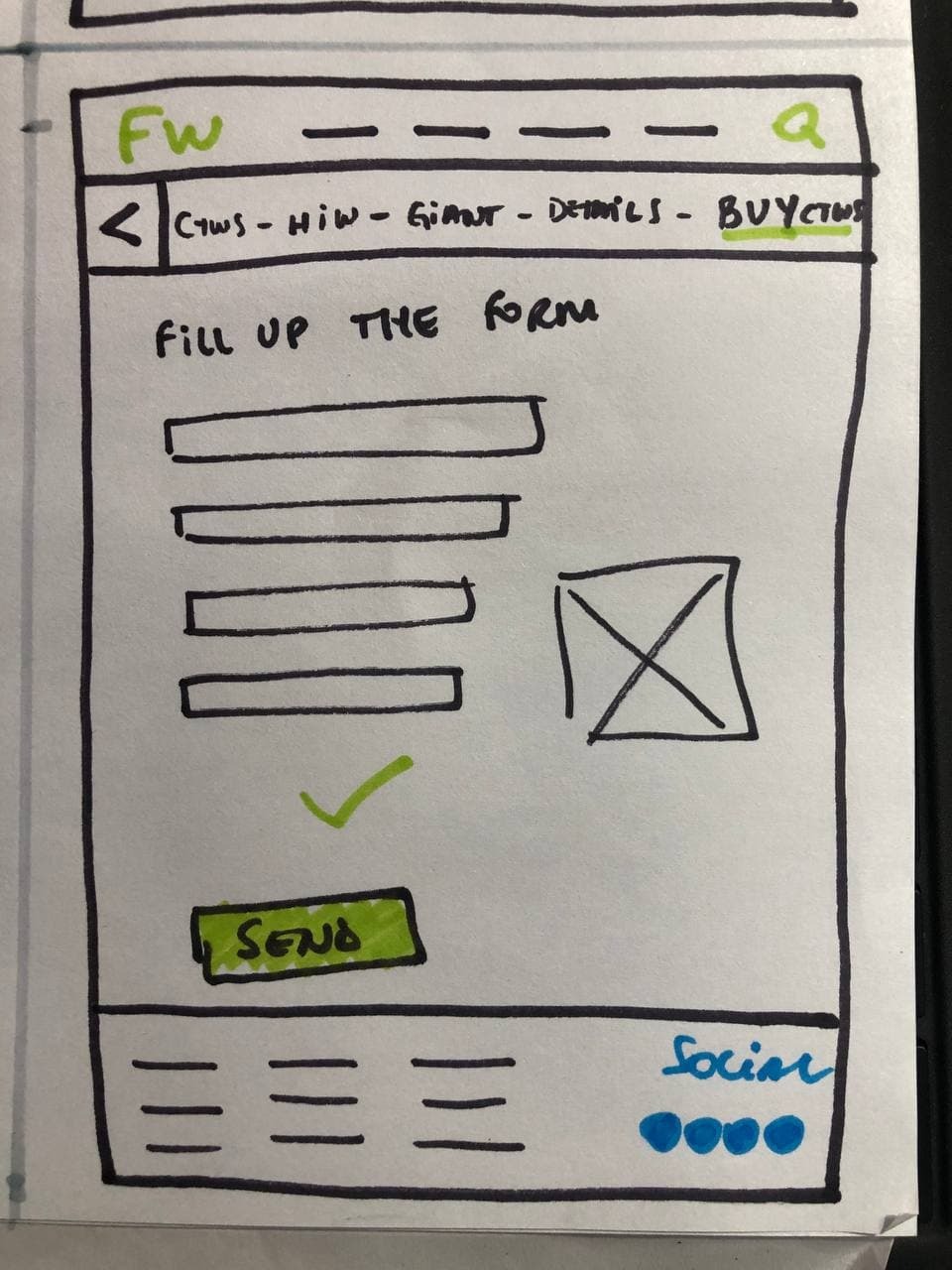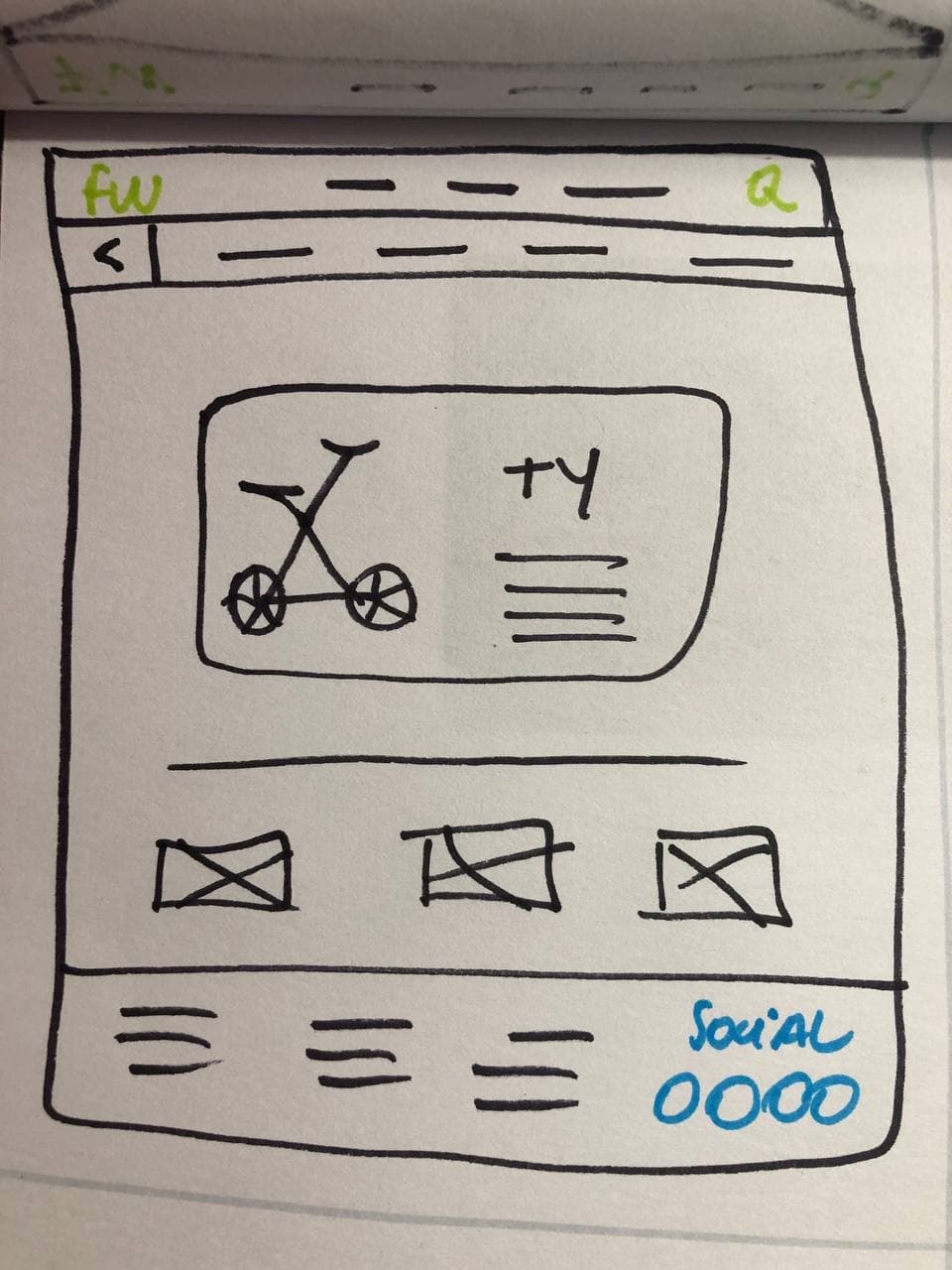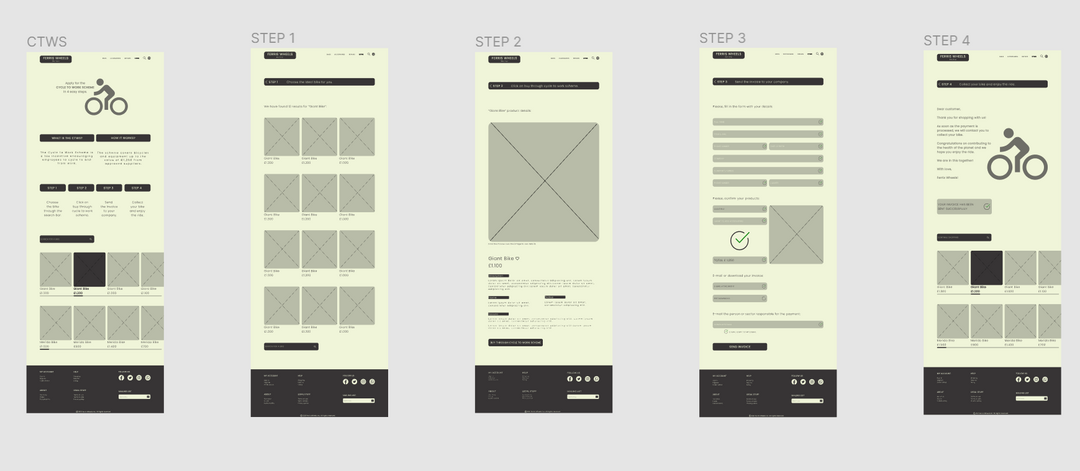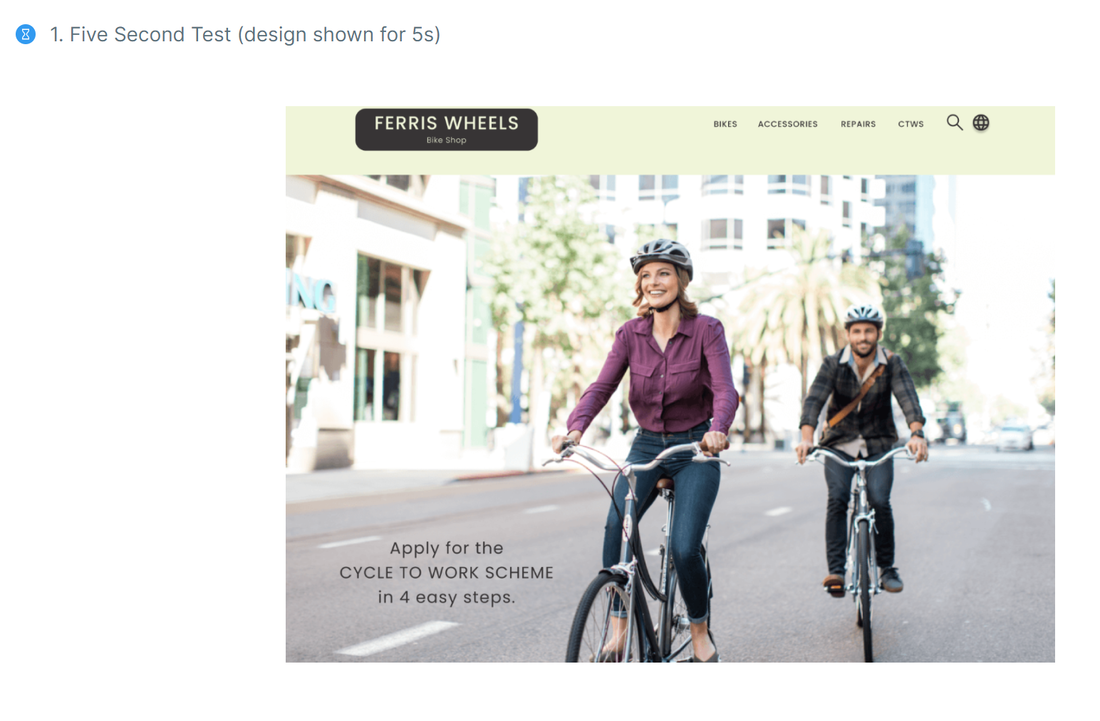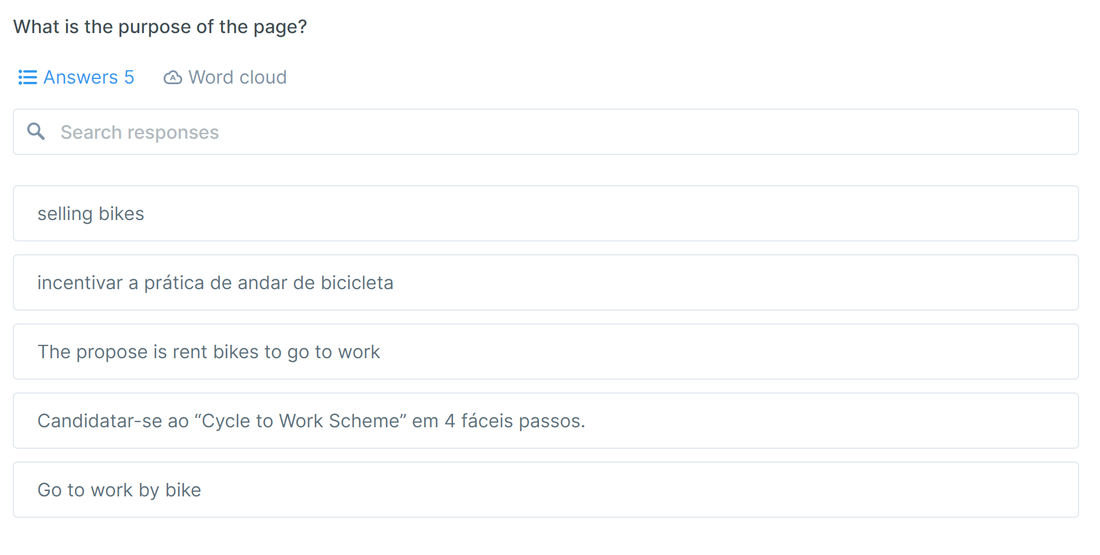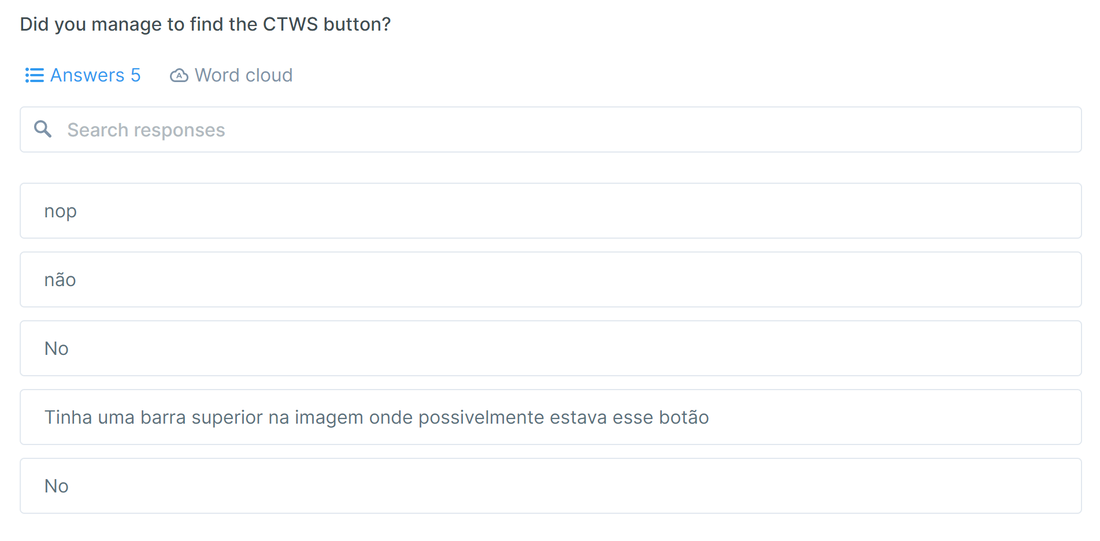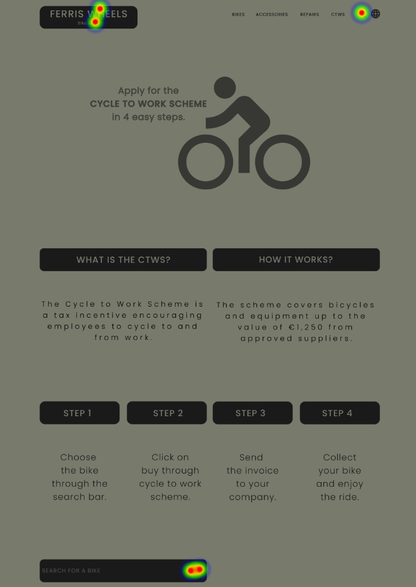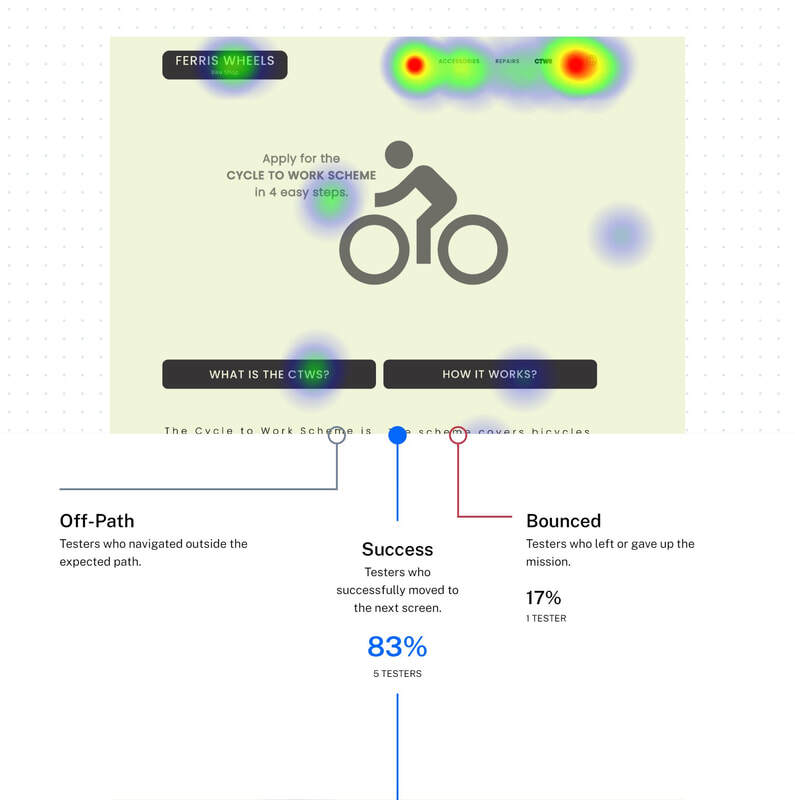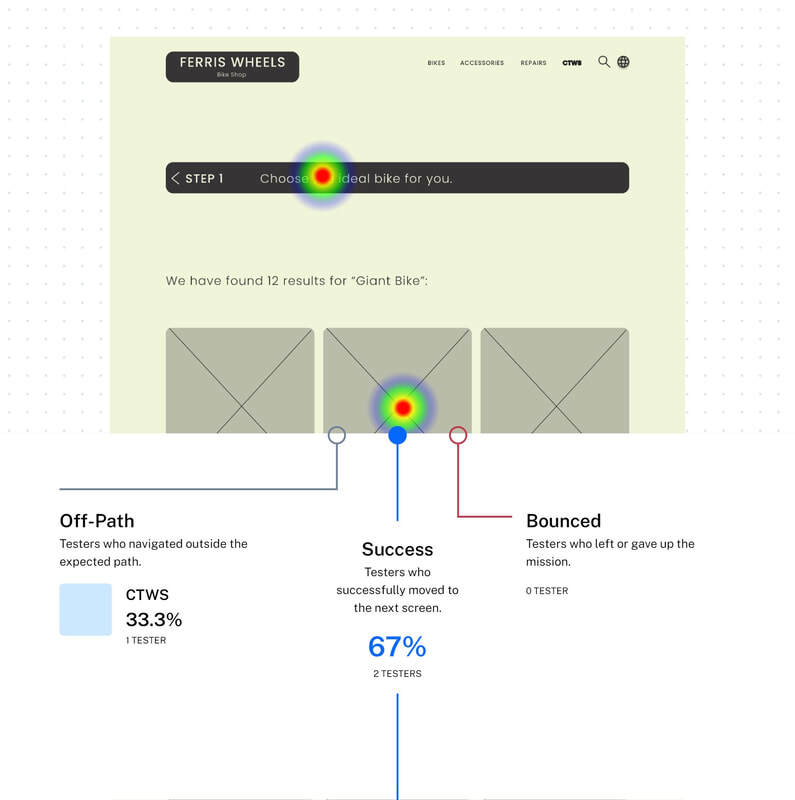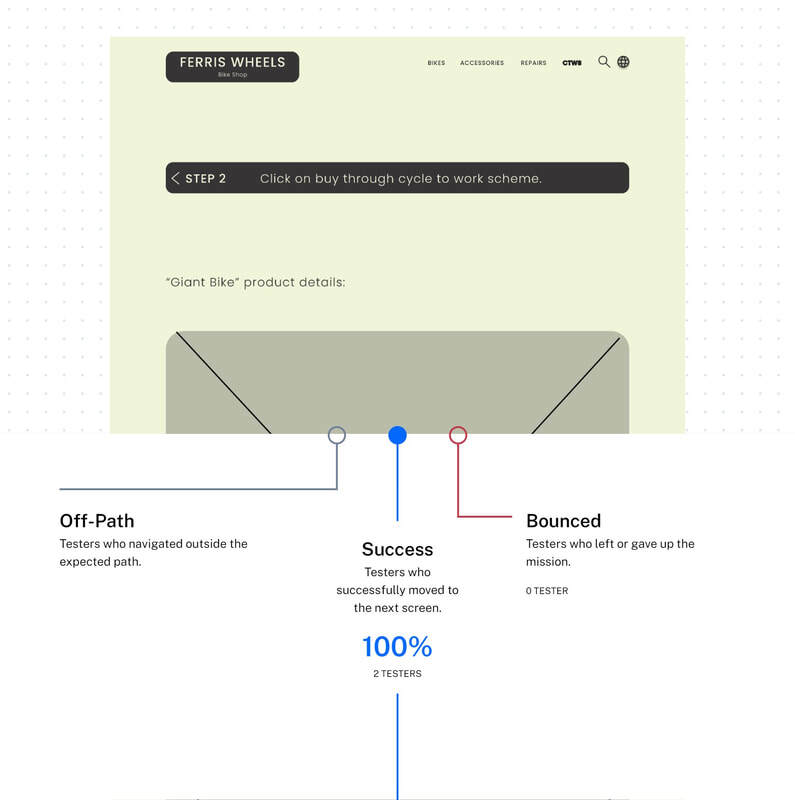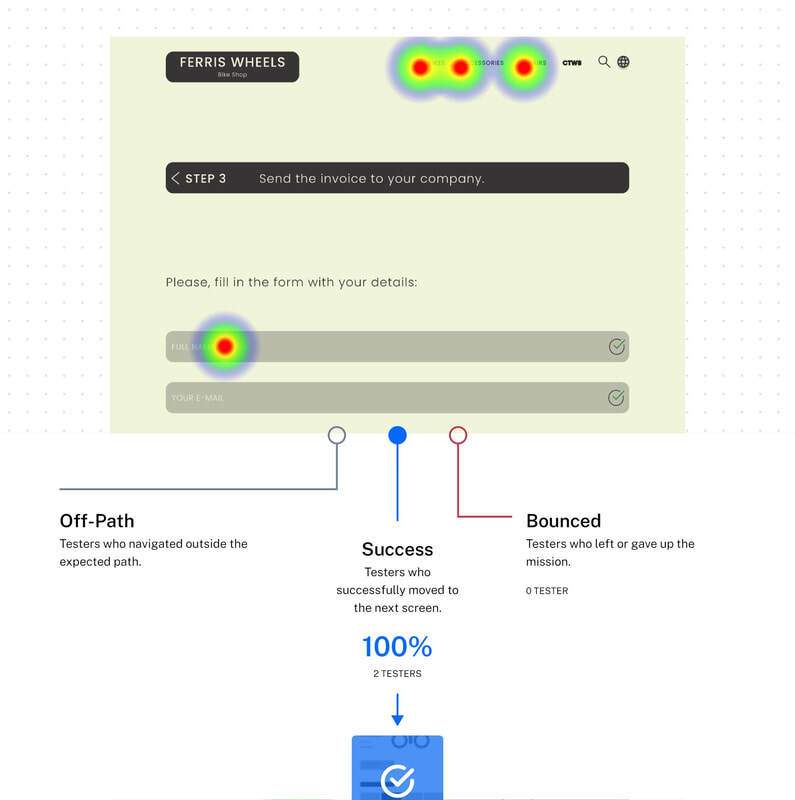BIKEPRO
to enable purchase via the Cycle to Work Scheme.
Overview
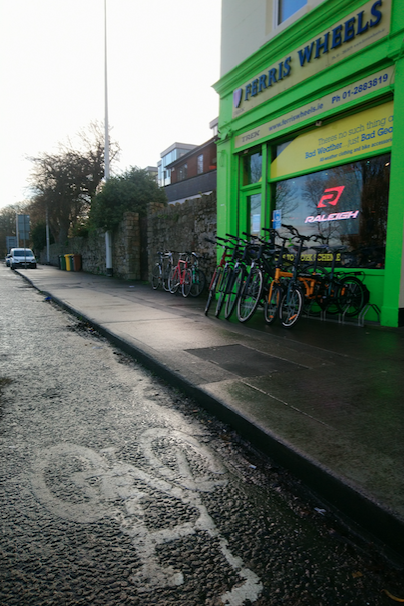
The CYCLE TO WORK SCHEME allows employees to obtain commuter bikes and cycling accessories through their employer, whilst spreading the cost over 12 months and making unbeatable savings through a tax break."
Source: revenue.ie
I don't buy online, but I would like to see the product on the website, it helps with my purchase decision." Kate, about the shop's website.
I had a little difficulty finding information about the program. I had to talk to some workmates who had already done it. After choosing the bike, I also had to make several trips between the shop and the company to complete the documentation. I found it a little bit annoying." Josh, about the SCHEME.
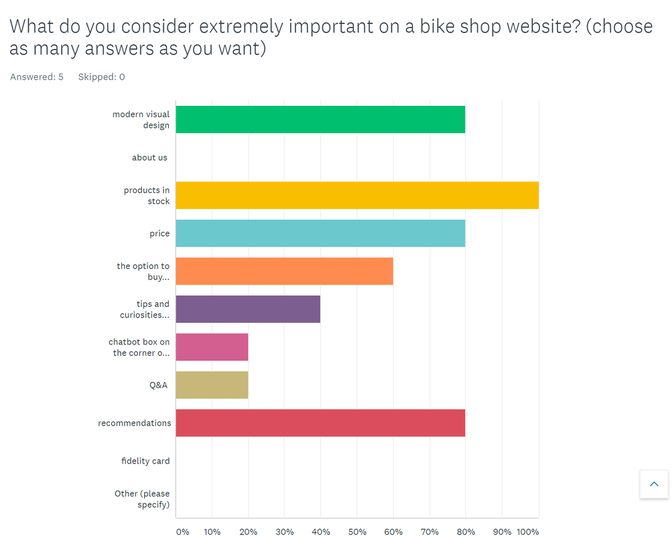
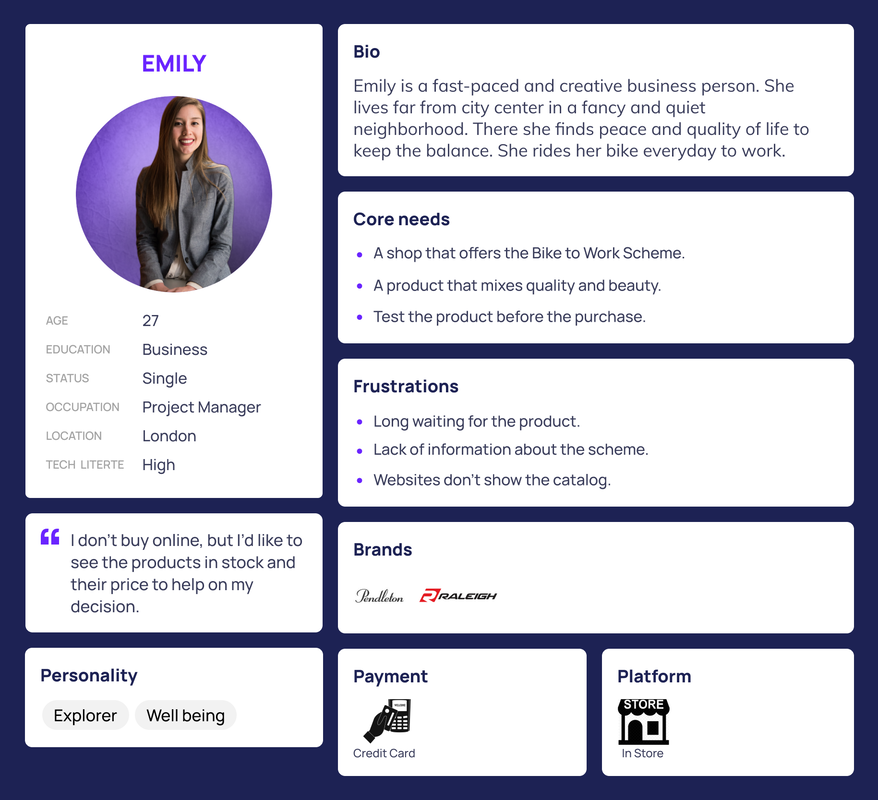
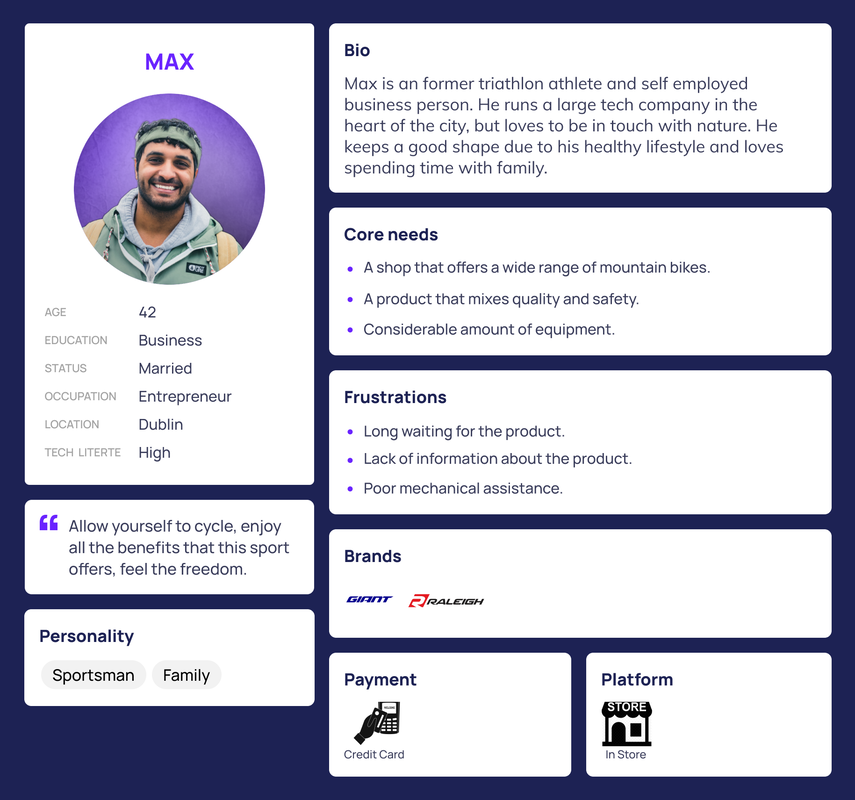
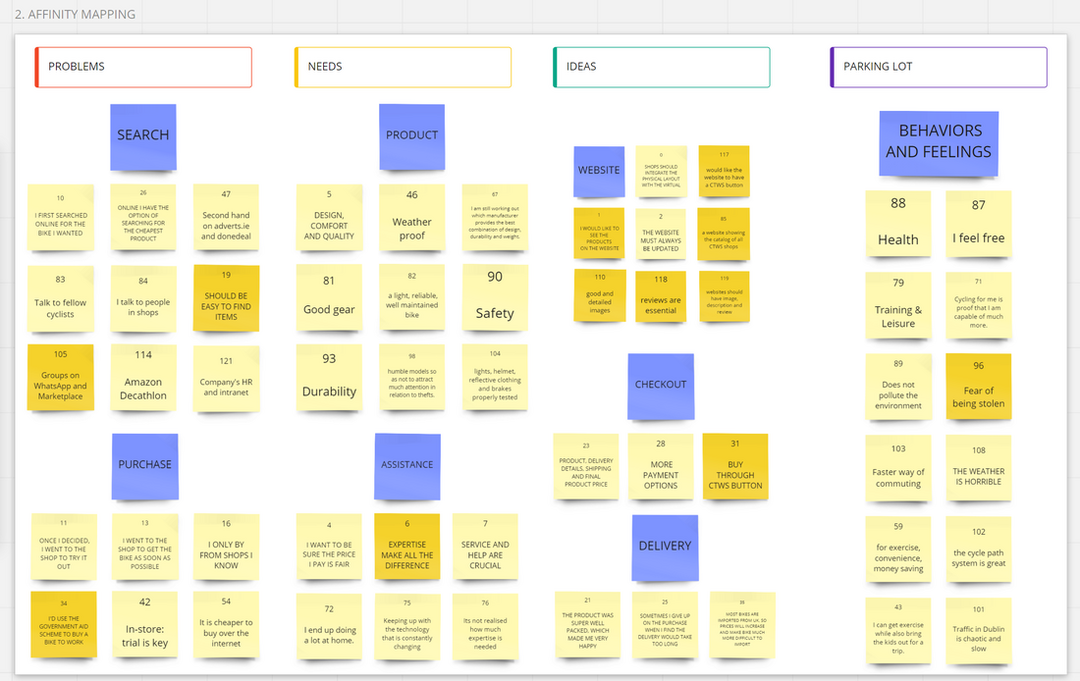
How might we facilitate the the cycle to work scheme process for the user?"
A button called BUY THROUGH CYCLE TO WORK SCHEME.
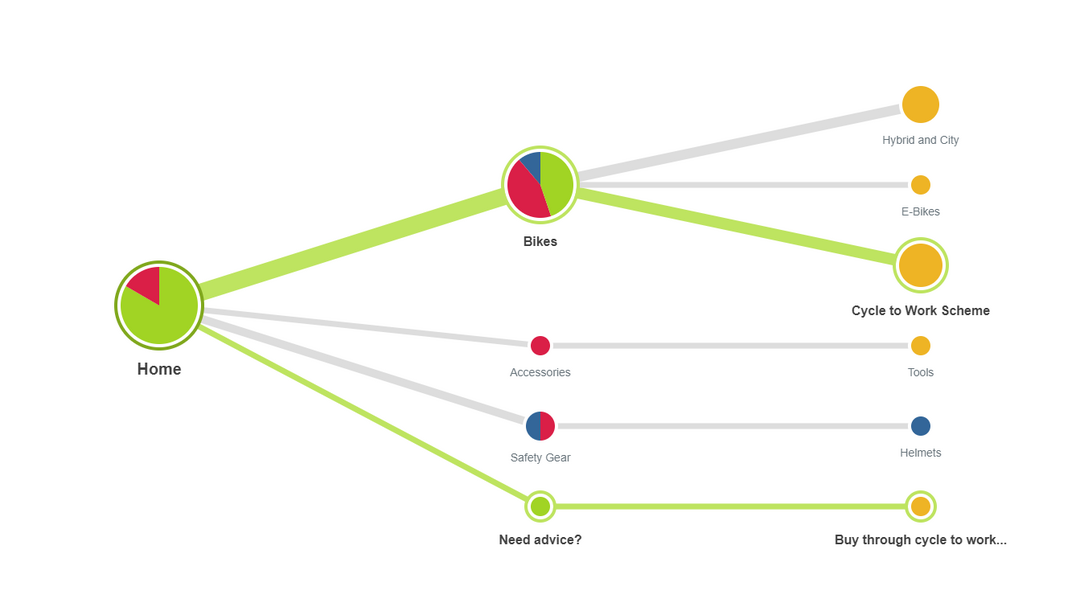
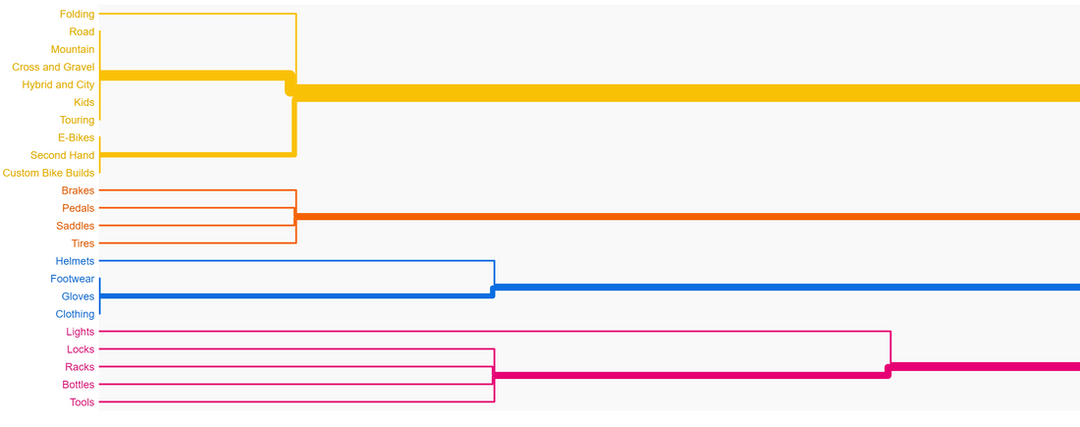
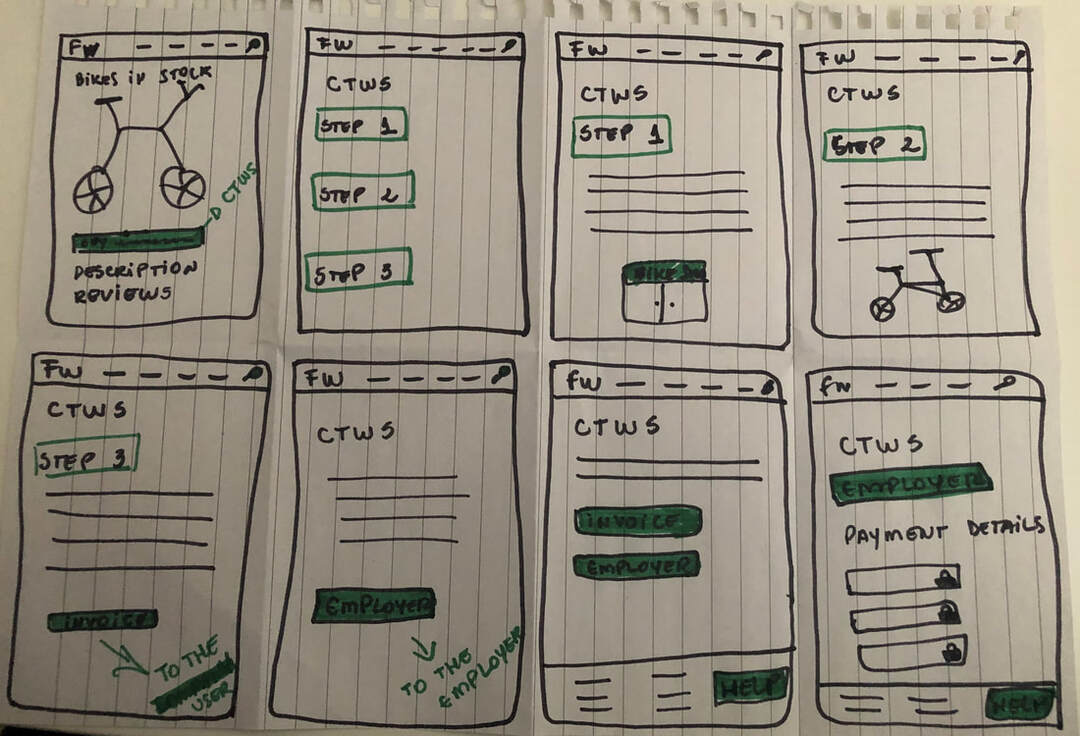
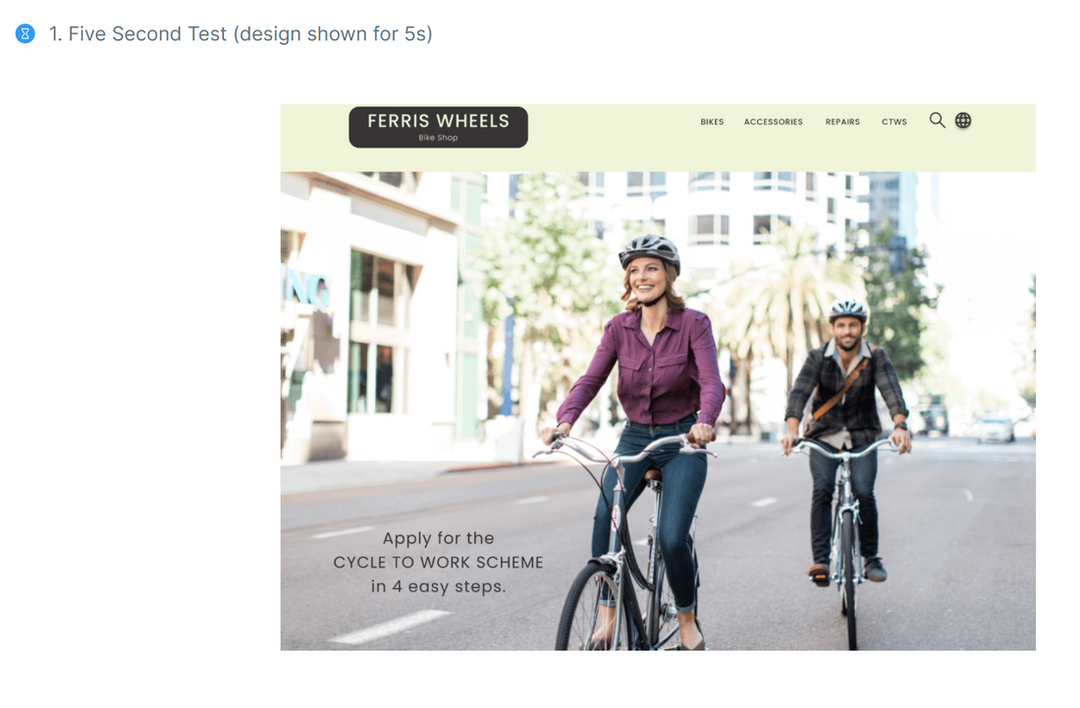
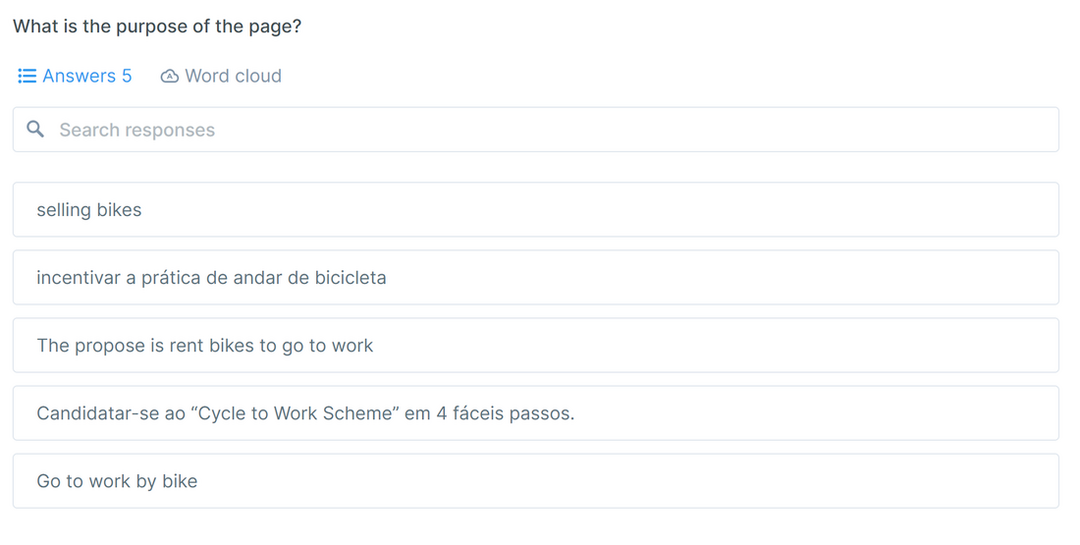
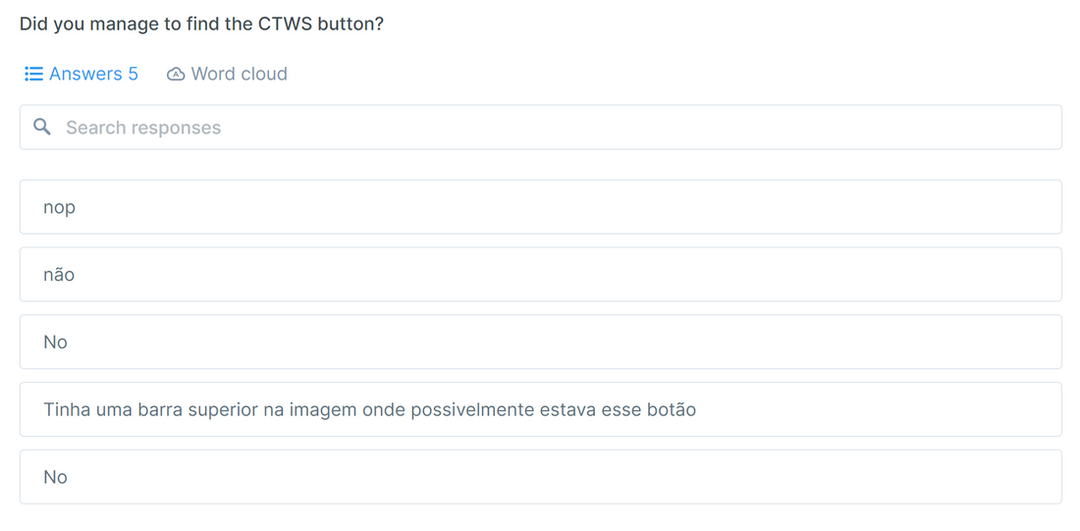
Where would you click to search for a bike?"
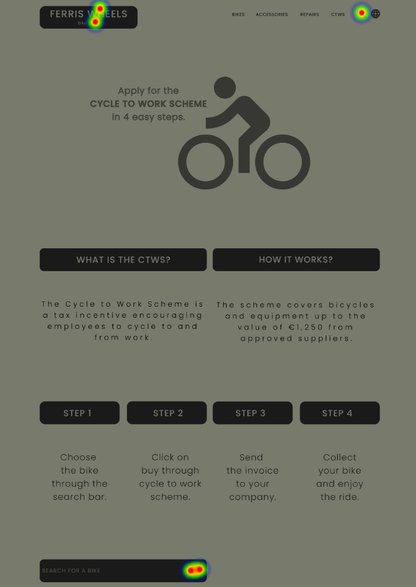
- positioning of the search bar at the top of the page, possibly on the left side;
- insert an info box at the corner of the accessories field to explain how to add them;
- study other possibilities for the color palette, as some users didn't feel comfortable with their composition because there is not much contrast (the palette was analysed by the WCGA Color Contrast to offer a better experience for color blind people, see full report here ACCESSIBILITY);
- reduce the step-by-step for users who understand the process and direct them to the purchase page straight away;
- eliminate the search option in the menu so as not to confuse the user when searching for the bicycle after step by step;
- reduce the length of the pages, avoiding endless scrolling and providing the user with greater agility in reaching the goal;
- increase the size of the search button, making it easier for the user to find it;
- reformulate the "CTWS" button in the menu so that it is found quickly.
